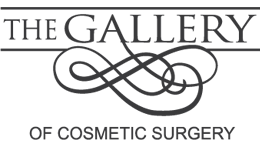With the rise in the popularity of platelet-rich plasma (PRP) therapy, the demand for skilled professionals who can inject it properly has also risen. The treatment is a solution in aesthetic medicine, sports injury recovery, and hair restoration. PRP has become the first choice of doctors when it comes to providing natural therapy. It leverages the body’s own healing properties for natural rejuvenation and repair.
In the midst of all the popularity, a key question that arises is: Can nurses perform PRP injections? The answer largely depends on their level of training, certifications, and local regulations.
Can nurses perform PRP injections?
1. Qualifications of Nurses
In most of the states, registered nurses and nurse practitioners who are trained in aesthetic medicines are permitted to practice the PRP injections. But there is a catch: they need to perform the procedure in the presence of a licensed physician. Some states in the U.S. allow RNs to perform PRP treatments if they have completed additional certifications in injection techniques and PRP administration, while others restrict PRP injections to advanced practice nurses, such as NPs or Physician Assistants (PAs).
2. Training and Certification
PRP injections are not as easy as it seems. It needs skilled hands with hours of training to apply the injection in a proper way to avoid any complications. The certification helps them gain deep knowledge on the anatomy of the body and also gives an insight into the various techniques they can use to inject the PRP. These programs cover the technical aspects of PRP, including blood draw and centrifugation techniques, patient assessment, and injection protocols. Training also typically includes safety measures, sterile techniques, and the handling of PRP kits and equipment.
3. Supervision and Collaboration
While many nurses can perform PRP injections with the appropriate training, some jurisdictions still require that they work under the direct or indirect supervision of a physician. This collaborative approach ensures that any complications or questions that arise during the procedure can be addressed promptly.
Benefits of Having Nurses Perform PRP Injections
Allowing trained nurses to administer PRP injections can provide multiple benefits, such as:
- Nurses often have more availability, which can reduce patient wait times.
- Nurses are often skilled at building rapport and educating patients about the procedure, making them a valuable asset in creating a positive patient experience.
- In a clinic setting, nurses who are qualified to perform PRP injections can also support physicians by taking on these treatments, allowing physicians to focus on other advanced or complex procedures.
- It increases the workflow efficiency and helps the practice serve more patients effectively.
Bottom Line
As PRP continues to gain spotlight, nurses with the proper qualifications, training, and supervision can indeed perform PRP injections in many areas. With the appropriate certifications and knowledge, nurses are well-positioned to contribute meaningfully to this innovative field, offering patients access to safe, effective, and expertly administered PRP treatments.


